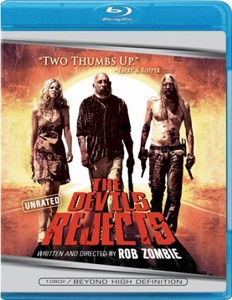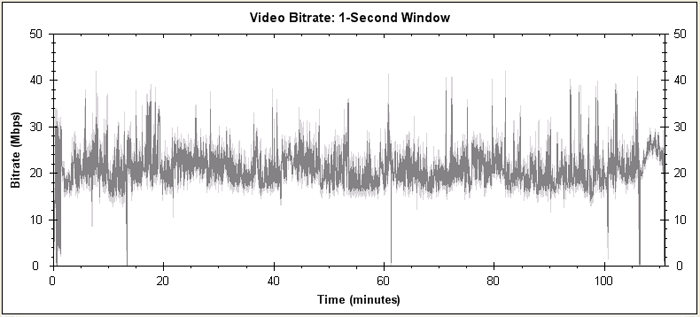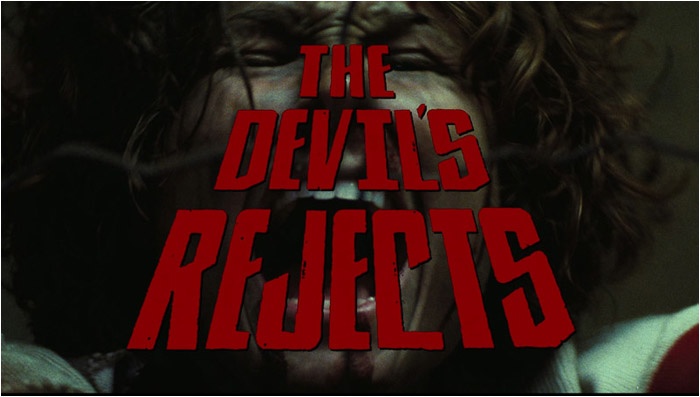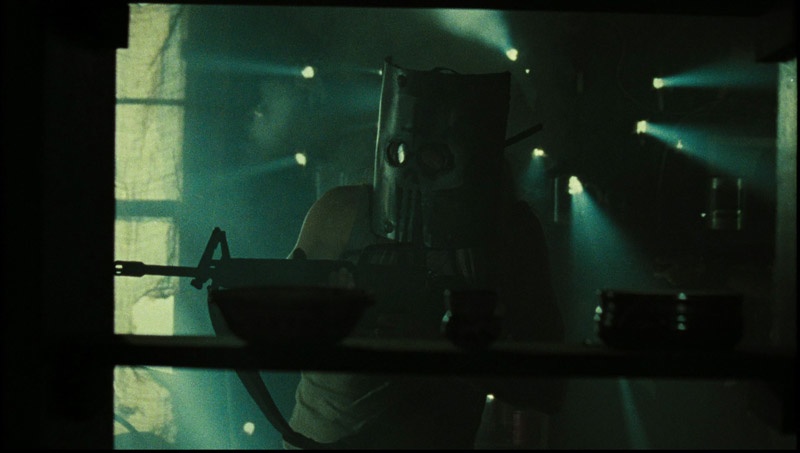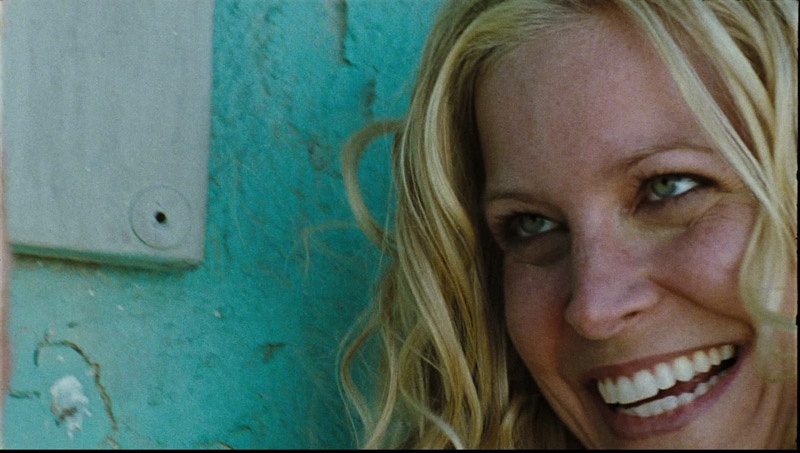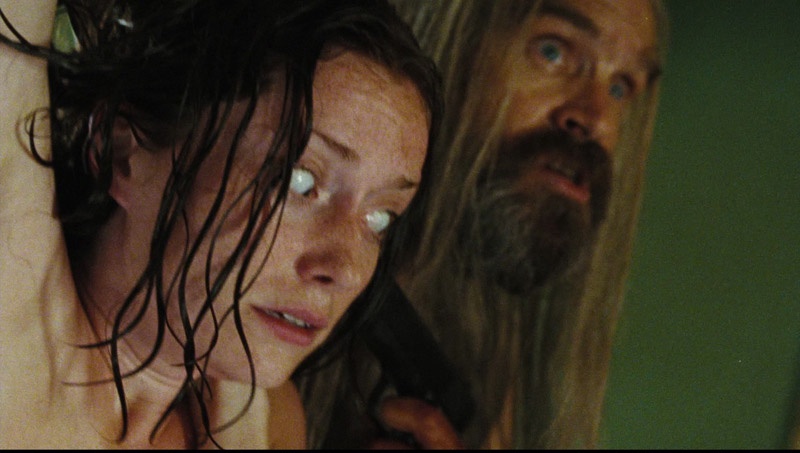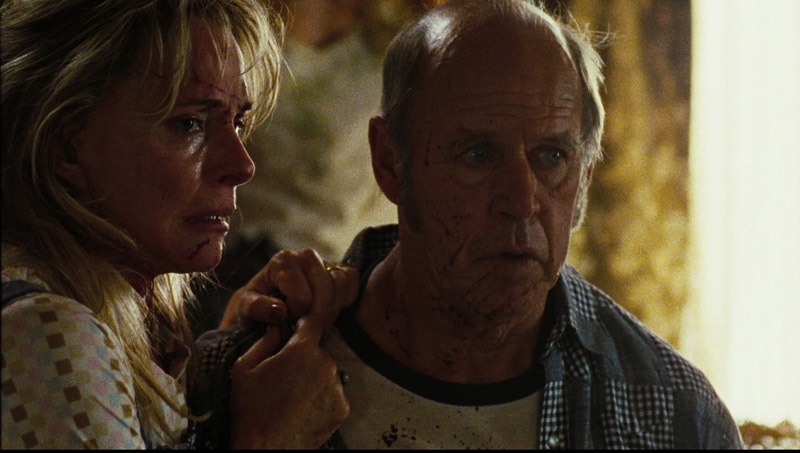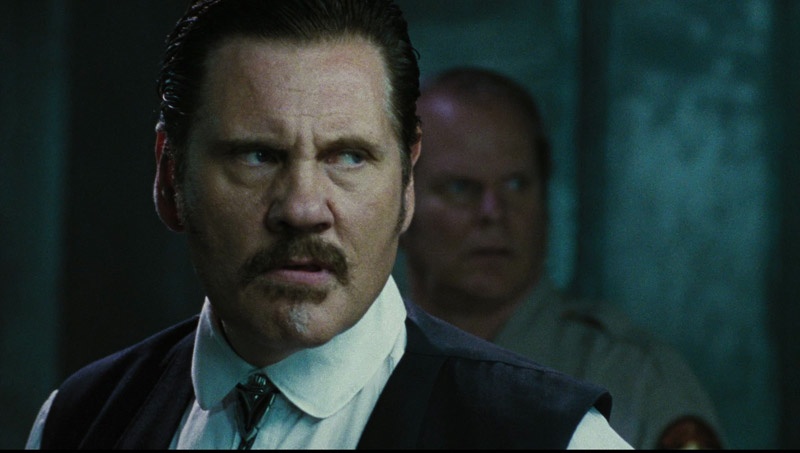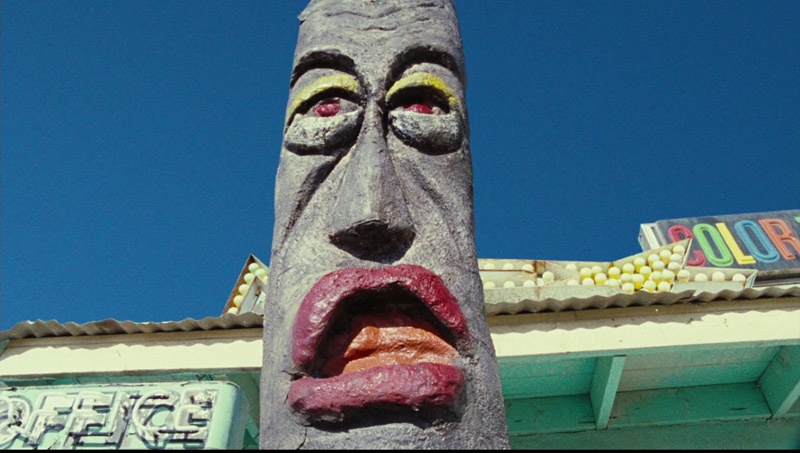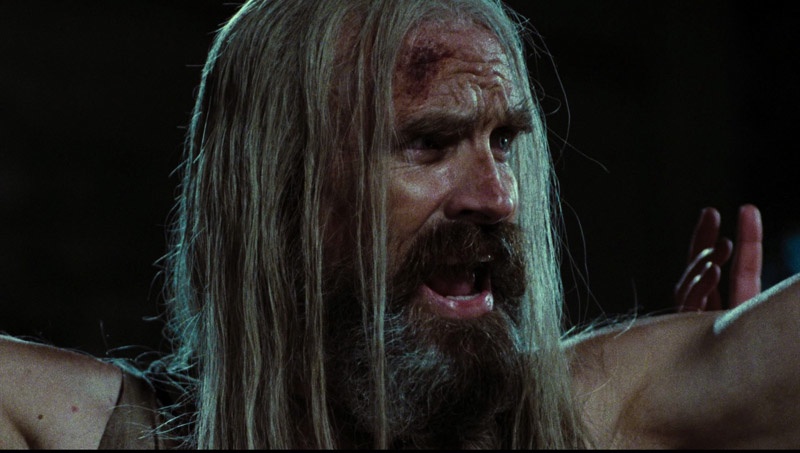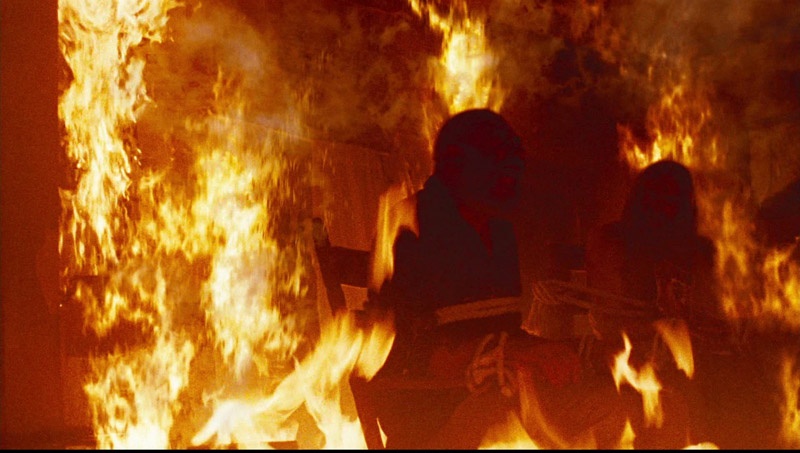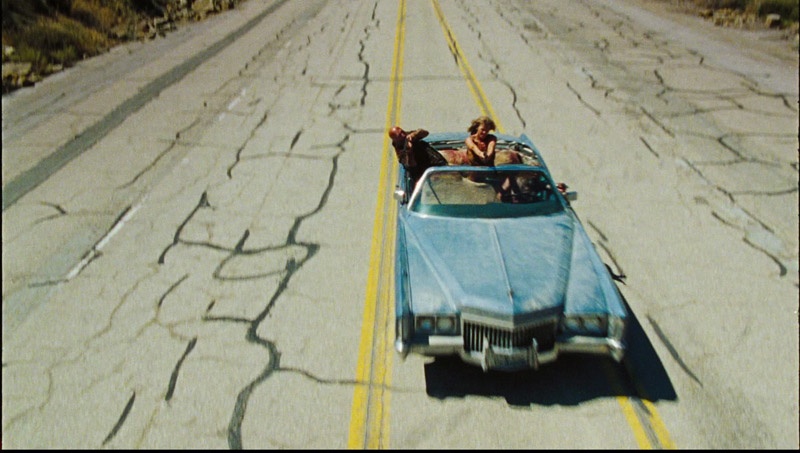Review by Leonard Norwitz
Studio:
Theatrical: Cinelamda, Devil's Rejects Inc., & Firm Films
Blu-ray: LionsGate
Disc:
Region: FREE!
(as verified by the
Momitsu region FREE Blu-ray player)
Runtime: 1:50:53.647
Disc Size: 24,906,928,444 bytes
Feature Size: 21,967,306,752 bytes
Video Bitrate: 20.71 Mbps
Chapters: 14
Case: Standard Blu-ray case
Release date: August 22nd, 2006
Video:
Aspect ratio: 1.85:1
Resolution: 1080p / 23.976 fps
Video codec: MPEG-4 AVC Video
Audio:
DTS-HD Audio English 3039 kbps 6.1 / 48 kHz / 3039 kbps /
24-bit (DTS Core: 6.1-ES / 48 kHz / 1509 kbps / 24-bit)
Dolby Digital EX Audio English 640 kbps 5.1-EX / 48 kHz /
640 kbps
Dolby Digital Audio English 192 kbps 2.0 / 48 kHz / 192 kbps
/ Dolby Surround
Dolby Digital Audio English 192 kbps 2.0 / 48 kHz / 192 kbps
/ Dolby Surround
Subtitles:
English, Spanish, none
Extras:
• Audio Commentary by Writer/Director Rob Zombie
• Audio Commentary by Cast Members Sid Haig, Bill Moseley &
Sheri Moon Zombie
• Deleted Scenes
The Film:
Comment:
LionsGate's "Uncut" version of Rob Zombie's essay on
ultra-violence and vigilante justice marks the first
appearance of the movie in high definition this side of the
Atlantic and one of the early transfers in the new medium.
The Movie : 8
While you could think of this movie as a sequel to Rob
Zombie's first directorial effort, the ghoulishly bloody and
deliciously titled House of 10,000 Corpses, The Devil's
Rejects is so superior and assured in every way, it should
be considered entirely on its own merits. I dare say the
movie is so good that it begs the question as to what
constitutes a proper way to judge it, let alone score it.
As much as I'm tempted to give that question a long and
serious look, I shall content myself with a few spasms: I
make the assumption that such movies do not arouse murderous
feelings in ourselves, but rather permit us to confront,
perhaps even savor, them in a relatively safe environment.
Most significant for me, is the question of when does a
slasher movie become a stand in for a snuff film? How "real"
is the terror. Are we, the audience, as terrorized as the
victims the killers happen on? Do we imagine that meeting
the actors who play the killers would generate a feeling of
dread, or that meeting the actors that play the victims
would provoke a sense of embarrassment for having witnessed
their cruel execution?
Does the director wink at the audience, as Hitchcock always
did (with the possible exceptions of Frenzy and Psycho),
assuring us that this is just a movie? Do our smiles and
laughter come from anxiety or an understanding of intention
or something even more cosmic? Are there diversions in the
movie, as if the director himself couldn't bear to look?
Does whatever sense of irony there is ease our pain? Should
it?
In the present case, I was more convinced by the victims
than the killers. There were a few times I felt that Bill
Moseley, though he certainly looks the part, was just
acting; and that Sheri Moon, though much more convincing
here than in hubbie's Halloween, was about to break into a
giggle. But, in general, these two, and especially once Sid
Haig joins them, were sufficiently threatening that I was
all the more convinced by the panic of the victims. Special
high marks, then, to Priscilla Barnes (would you believe,
Terri from Three's Company), Geoff Lewis (who plays her
husband) and Kate Norby, among the victims from the hotel of
lost souls. . . and to Leslie Easterbrook, "Mother Firefly"
who is even more frightening in captivity than on the run.
Final note: Many of these actors are pros and far from the
age we expect to see in slasher and horror films. Haig was
65 when the movie was made; Moseley and Easterbrook, 55 and
56; Barnes, 50; and Geoffrey Lewis, 70. There are no
teenagers, no young adults, no horny behavior ripe for a
knife in the throat. On the contrary, the killing is all
arbitrary – which is always more frightening than
"deserved." Just one more reason to credit Zombie as a
serious director.
Image:
8/8
NOTE:
The below
Blu-ray
captures were taken directly from the
Blu-ray
disc.
As was not uncommon at the time, the encode is MPEG-2, not
that the movie wants for anything of finer distinction. This
is not to say that The Devil's Rejects doesn't deserve as
good as any other film, but that the nature of original
film, shot as it was in 16 mm, doesn't insist on or expect
anything more refined. It might even object to it. The bit
rate is healthy enough in the low 20s, and the disc makes
considerable use of its single layer. I don't find any
issues that aren't attributable to its source material.
Contrast and black levels are superb. Color is lurid, but
doesn't oversaturate. Natural film grain is apparent long
before any noise issues come to bear. Frankly I can't
imagine this movie to have looked this good in the theaters
it must have played in, what with projectionists that
couldn't have cared less and prints that cared less than
that.
CLICK EACH
BLU-RAY
CAPTURE TO SEE ALL IMAGES IN FULL 1920X1080 RESOLUTION
Audio & Music:
Audio & Music: 8/9
The 6.1 audio mix is "DTS-HD Audio" – that's "HD" without
the "MA" - but still comes in at a solid 3.04 Mbps
(48kHz/16-bit.) I've seen less from "HD-MA." The present mix
holds it own quite well compared to the then present
competition, especially when we consider that Warner
wouldn't embrace the idea of high definition audio for
another two years. Surrounds are involved and involving,
with the crackle of fire and firearms coming from there and
behind. More to the point, the audio here has a live,
unprocessed uncivilized feel to it, helped along by some
savvy 70s rock music choices that somehow supports the
drama, rather than simply make use of an available
semi-iconic library: We have to love the ironic touch in
Lynyrd Skynyrd's "Free Bird" for the finale and the best
rendering of "Midnight Rider", courtesy of the original
Allman Brothers, since Willie Nelson's Electric Horseman, to
name just two of many.
Operations:
Operations : 6
My one complaint about the menu design is that it is so
bloodsoaked as to make its information and directions harder
to read than is necessary.
Extras:
Extras : 6
Dual layered Blu-ray content had not yet hit its stride when
The Devil's Rejects made its appearance on high def, and for
that reason alone, there wasn't room for "30 Days in Hell,"
the nearly two and half hour making–of documentary that took
pride of place on the 2-disc DVD. What are brought over are
a number of deleted scenes and two commentaries: one by a
sober, serious minded and even a bit affable Rob Zombie, who
details all matters production as well as gives agreeable
voice to his love of the music he so liberally and
intelligently uses throughout his movie. The other is by the
Rejects Trinity, if I may be permitted a little mix of
metaphor. Sid, Bill and Sheri Moon have a good time on this
one.
Bottom line:
Recommendation : 8
Echoing every reviewer with a shred of humanity (and some of
us do have that), please take the blood, gore and
repulsiveness of its subject seriously. I like what Peter
Hartlaub said of it at sfgate.com
HERE:
"Still not sure if you should let your 13-year-old see
it? On an inappropriate movie scale of 1 to 10, where the
R-rated "Wedding Crashers" rates a 7, "The Devil's Rejects"
gets about a 194. The film opens with a naked, bruised woman
being dragged through the forest by a guy with burn scars
for a face -- and that's one of the easier scenes to watch.
Some dude in front of me brought what looked like a
3-year-old boy to the critics screening, and the $30 he
saved on a baby sitter will one day cost $30,000 in therapy
bills"
Leonard Norwitz
March 7th, 2010
![]()
![]()

![]()
![]()
![]()
![]()

![]()
![]()

